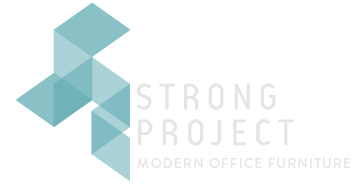The open office floor plan is the predominant model for the modern workplace. In fact, according to the International Facility Management Association, nearly 70 percent of U.S. offices have a version. Designed to increase profit and maximize productivity, under the guise of celebrating teamwork and encouraging creativity, the open office shows no sign of stopping. With the rise of hybrid and remote work in the wake of the pandemic 25% of these spaces also have unassigned seating. According to CRBE, his number is expected to rise to 52% in the next few years. But how are workers fairing in these wide-open spaces? Distractions have some struggling to perform at their highest level and afraid to set boundaries with colleagues and bosses. In addition, the period of working from home has many craving the quiet and solitude when they are in the office.
When companies like Google, Facebook, and Amazon depict their massive campuses, it’s hard not to imagine casually dressed millennials chatting about the latest subreddit while standing next to pristine ping pong tables. The picture is replete with a brightly lit cafe. Once the lattes are poured, we imagine them hurrying to a team meeting where teams brainstorm the next big idea. It’s why we have FOMO. We know what we see, but what do we hear? That’s the sound of open office noise pollution.
Distractions have some struggling to perform at their highest level and afraid to set boundaries with colleagues and bosses.
To whom does the onus belong if someone, or more than likely many someones, can’t concentrate with the distracting clamor that teamwork brings? Responsible management. And for the most part, there are easy ways to create the silence and privacy that some workers crave, and balance it with the collaborative intentions of the open workspace.
Design Quiet Spaces with the Open Office
Employees need focused workspaces. Especially when it comes to creative or detailed work. Create spaces within your office that are dedicated to this type of work. Including acoustic furniture can help accomplish this. Or partitioned spaces with individual adjustable height desks away from the open floor, or a conference room specifically designated as a quiet room.
Create Space Away from Homebase
Yes, you have your desk, but everyone needs to move and change the scenery. Add different workstations to the office. Collaborative couches where people can discuss ideas (away from others) and then go back to their own desks and work on the details quietly. Bring in some comfy acoustic furniture where employees can find solitude away from the hum of the office center.
Have Study Hall in the Open Office
Just like in high school, set a certain time of the day that’s quiet. No calls, no meetings, no collaboration, no music. It’s one full hour of dedicated work time in the morning and in the afternoon. Try to make it a consistent time every day, every week.
Batch Standard Communications
Rather than a barrage of emails, texts, and voicemails throughout the day, encourage staff and management to send them in groups at 11 am and 4 pm. It makes everyone work efficiently when you think about what you are sending, rather than firing off emails every time something pops in your mind. And it greatly limits your inbox clutter.
Everyone needs time to work alone. And some of us need to do it in an uninterrupted environment in order to do our best.
Collaboration happens when we work apart, we come together, we work apart, and then we come back together. And in a hybrid work model, the office needs to be a place where connection happens. But this can’t come at the cost of the focused work time that is also in demand in the open office. Teamwork is not made of mutually exclusive endeavors. Everyone needs time to work alone. And some of us need to do it in a focused environment in order to do our best. That is a challenge in the era of the open office floor plan. However, if employers use strategies to reduce noise pollution and make concessions for workers who need solitude, the entire team reaps the benefits and that’s something to shout about.
Want to explore more? Check out these related topics:
Updated June 2022







